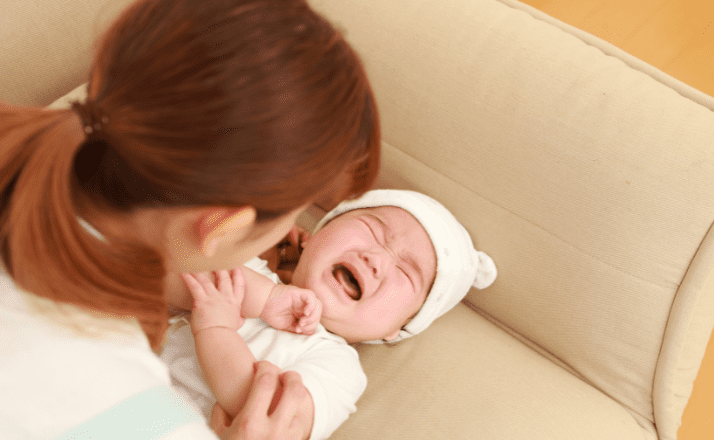Anyone who has ever tried to get crying babies to sleep knows that it can feel like an impossible task.
Not only is your little one freaking the heck out, but all that fuss and fluster can send your own stress level racing.
And in the midst of that kind of chaos, a parent will try damn near anything to make it all just stop.
What if I told you that all you have to do is walk while holding your baby for exactly five minutes followed by sitting with your baby for eight minutes? Might sound bonkers, right?
Well, a team of Japanese scientists has figured out that this is apparently the sweet spot for getting a fussy baby to settle down and fall asleep.

In a new study published by Current Biology, researchers found that when a parent holds their baby and walks, the baby’s heart rate will calm down.
But the timing and motion has to be pretty precise because if the parent stops or turns to quickly, researchers found that the baby’s heart rate would crank right back up again.
What is kind of wild, though, is that this method only appears to work if your baby is actively crying.
If your baby is alert and not crying? It won’t work.
“If you know this method in advance, you can try it before you start wondering what is wrong with your baby if they’re not sleeping,” Dr. Kumi O. Kuroda, one of the lead researchers in the study from Japan told TODAY Parents in an interview.
“You can just try it — most parents will spend five minutes walking with their babies during the day. Everyone does it it, it’s safe, and it’s just a useful option that someone may want to try.”
The magical solution to your baby’s sleep problems has to do with a human function called transport response, which is a phenomenon observed in mammals.
They can distinctly tell the difference between being carried by a trusted caregiver. When a parent moves suddenly (like turning), or stops, the baby can tell and will respond.
“The first five to eight minutes of sleep is shallow sleep. So, if you immediately place their infant down after they’re asleep, you’ll hit the shallow sleep, they’ll wake up and you’ll be unsuccessful,” Dr. Kuroda told TODAY Parents.
“That’s why you want to wait for that five to eight minutes after the infant falls asleep. That will increase your success rate.”
Dr. Kuroda went on to say that although this is a fascinating study with interesting results, it is not intended to be advice meant to replace whatever methods you currently use that work.
Because we all know that every baby (and parent!) is different and what works for one baby to fall asleep won’t work for another.
One of the key ways to consistently get your baby to sleep is to create a routine that your baby can rely on.
A sleep routine (or some call it sleep hygiene) helps give your baby signs that it’s almost time to catch some Zzzs and by sticking to the routine, it will help your baby fall asleep quickly.
The American Academy of Pediatrics (AAP) recommends the following checklist to help you and your whole family (including your baby!) a great night of sleep:
- Avoid using screen as quiet time to help your child get sleepy.
- Make sure the bedding is comfortable and not too warm or too cold.
- Try a warm bath right before bed to help encourage sleepiness.
- Snuggle up and read a calm, quiet story together.
- Use scents like lavener, rose, and chamomile to help promote calmness.
Sleep routines are an effective way to make sure your baby gets all the sleep they need. To read the full checklist, head over to the AAP here.
And if your baby is crying and obviously not going to sleep anytime soon, try the walking and sitting method from the Japanese study and see if that can help soothe your little one to sleep.










